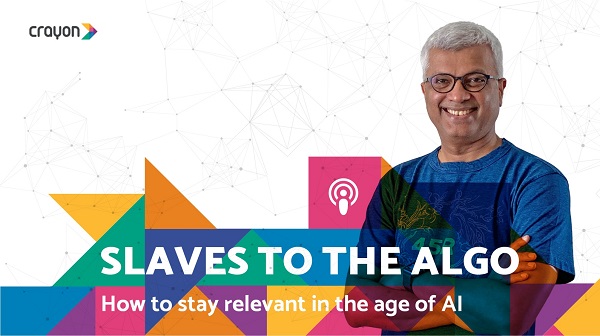While email marketing is a great way of accelerating sales and generating revenues, it is artificial intelligence which is taking email marketing to new heights. In fact, it wouldn’t be wrong to say that artificial intelligence is the future of email marketing. Artificial intelligence, with its ability to utilize a given data through computer and carry out a particular function through trial and error is revolutionizing the way email marketing strategies worked. Here’s how AI achieves this in three steps.
As easy as 1, 2, 3
Artificial intelligence has all the features that can change the field of email marketing for better. There are three things to keep in mind.
- Detect: AI comes with the feature of detecting which elements of a given set of data are the most predictive ones while deciphering which ones to pay attention upon and which to ignore.
- Deliberate: Further, AI also has the ability to analyze the most predictive attributes against each other amidst the collected data while making a recommendation or answering a question.
- Develop: Machine learning, which is a subfield of AI helps it in programming and reprogramming itself while maturing with each iteration. It can even modify and analyze data based on extracted information and the results of experimentation.
In addition, with artificial intelligence revenues increasing from around 9.5 billion U.S. dollars in 2018 to an expected 118.6 billion by 2025, it is quite clear that AI is going to have a massive growth which certainly would lead to the unprecedented development of email marketing too. Here’s how it can benefit email marketing in the long run:
- AI can offer a detailed analysis of various email marketing campaigns.
- It can even enhance the daily results and performance of email marketing.
- AI can assist businesses in identifying new customers while retaining existing ones.
- It can provide better insights into the business growth.
In short, incorporating AI in email marketing strategies can lead to higher conversion rates, better personalization, smart segmentation, boost customer gratification and thereby witness a considerable increase in customer retention.
Now, let’s take a broader look at how marketers can incorporate and leverage AI to make the most out of their email marketing campaign.
Optimizing subject lines
Subject lines are one of the most important aspects of any email strategy. While a good email subject line will attract customers’ attention and encourage them to click through and read it, a bad subject line will conveniently be ignored or even worse, marked as spam. Therefore, acing your subject line is critical for the success of your email marketing strategy. Earlier, a good subject line required a lot of experiments and analysis but, with the emergence of AI, it has become a simple task. AI with the help of algorithms generates subject lines that can attract higher click through rates. It analyzes and takes into account the results of each and every marketing campaign and ultimately optimizes and improves your subject line over time. Phrasee is one such tool that uses artificial intelligence to create more effective subject lines.
Sending hyper-personalized emails
With 74% of marketers believing that targeted personalization increases their overall customer engagement rates, it becomes all the more imperative to incorporate hyper-personalization in emails. This is where AI can come in handy. With the help of predictive analytics, AI can get hold of complex algorithms, customer data and machine learning to predict the future behavior of customers on the basis of previous interactions and data trends. With these data-driven insights, you can create customized emails that are personalized for each of your individual customers. In other words, AI is a great way of resonating with your target audience at a personal level. In fact, the best way to collect valuable data is to ask the customers for their preferences when they sign up for your email or receive the welcome email. Here’s how BESPOKE does it.

Working towards smart segmentation and targeting
As different subscribers have different interests and preferences, it is critical for email marketers to understand that categorizing them separately and sending them different emails is imperative. This is where segmentation can do the needful. Segmenting your subscriber list based on criteria like demographics, geographical location, purchase history, position in sales funnel can help you target your customers better. Further, with the emergence of AI and machine learning, it has become easier for email marketers to get access to precise details of customers and their specific behavioral signals and therefore segment them into clear, new and distinct groups. In short, segmentation if done properly can take your email campaign to next level. Take a look at how RescueTime makes good use of segmentation in its marketing email by studying the behavior of the customer and sending a personalized analysis report to each of its customers.

Optimizing the email sending time
While too many frequent promotional emails might annoy your customer base, too little of it can also bring you at risk of being taken over by competitors. However, AI eliminates all the guesswork involved and optimizes the email sending time by analyzing the subscriber’s activity history. In addition, AI can also zero out the personal habits, time zones and downtime of your customer to precisely schedule the right time of sending the emails. For instance, here’s a cart abandonment email with an incentive of free delivery from Jack Wills which has a great chance of success if sent on a calm and peaceful Sunday morning rather than sending on a hectic Monday morning.

Going for product recommendations
According to a 2013 report by Mckinsey, 35% of customers on Amazon and 75% of customers on Netflix purchase and watch anything specific respectively based on product recommendations. This fact has not gone obsolete even today. Therefore, sending product recommendation emails based on your customer’s browsing and purchasing history cannot only help you in building customer loyalty but also enhance the click-to-convert ratio of your emails. AI with its ability to analyze the customer’s online activity and purchasing pattern can help you send relevant product recommendation emails in real-time while boosting engagement and increasing the click-through rates as well as sales. Here’s an email by Netflix in which they send a recommendation email based on the shows the user has watched in the past.

Taking a deep insight into the customer lifecycle
An effective email marketing campaign requires marketers to get a deep insight into the customer lifecycle and send them contextual emails throughout. AI and predictive analytics assist marketers in generating and analyzing insights about the customers by extracting data based on their behavior and interests. With such robust data, it is very easy to create an email campaign that informs and engages customers in a better way while maximizing the ROI and revenues. This cart abandonment email from Sunglass Hut is an ideal example of leveraging customer data and engaging them.

Wrap up
Artificial intelligence sure is a worthwhile investment for any email marketer. Incorporating AI-powered email marketing in your business wouldn’t only improve your ROI but also lead to optimum utilization of resources. In conclusion, AI and machine learning have become an integral part of any email marketing strategy. Therefore, if you wish to be successful in the long run of business, it is high time you go the AI way. Make your email marketing campaign stand out amidst the bottleneck competition.





















